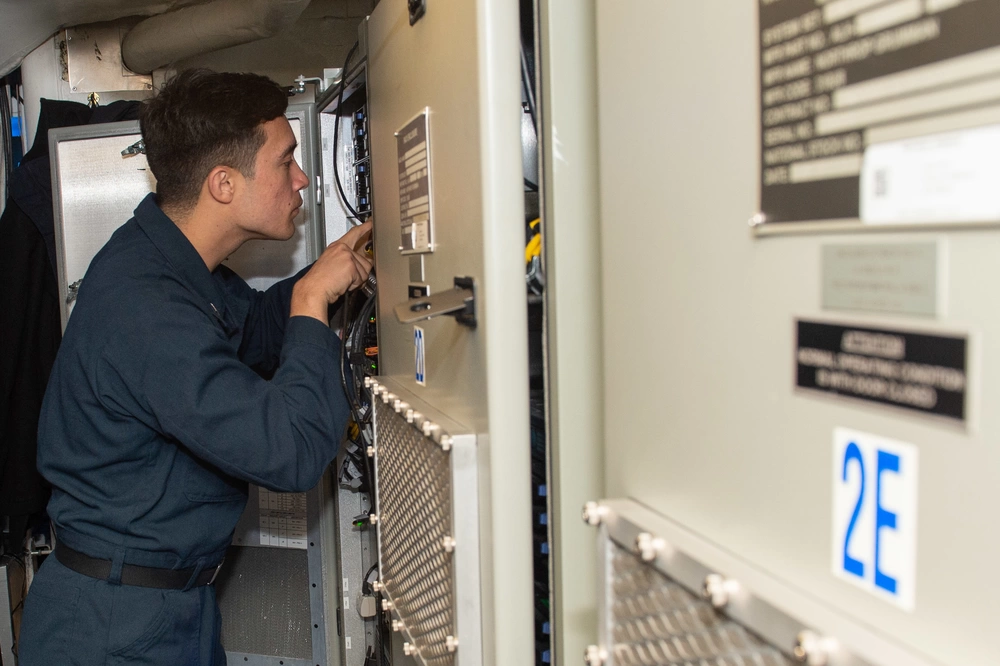Navy, Marine Corps leaders push for flexible cloud access at sea

The Navy and Marine Corps are working out how to best leverage cloud capabilities as they modernize and prepare to conduct operations at sea and in areas where connectivity is limited.
The sea services in recent years has followed both the Air Force and Army in making strides towards migrating applications to the cloud. But while cloud services are available to sailors and Marines on shore, being able to use weapons and platforms during operations hinges on access to the cloud at sea, said Rear Adm. Stephen Donald, deputy commander of the Navy Cyber Command.
“I love the cloud, but I don’t have access to the cloud all the time while I’m afloat. I need industry to figure out how to give me a virtual cloud, if you will, while afloat so that while I’m disconnected, I still have all the capabilities I can possibly have locally,” Donald said Tuesday during a panel at the Navy League’s 2023 Sea-Air-Space conference.
With a so-called “virtual cloud,” vessels at sea could stay online to keep capabilities like unmanned systems and artificial intelligence running even when they can’t connect to onshore networks. But Donald emphasized that reconnecting back to onshore networks should be seamless.
“I don’t have two different identities. I don’t have an afloat identity and an onshore identity, I have one identity that just seamlessly transfers as I go out that sort of moderates itself as bandwidth limitations or other network issues occur,” he said of what he wants in such an environment.
In 2020, a memo co-signed by the assistant secretary of the Navy for research, development and acquisition and the service’s CIO created a policy to accelerate promotion and acquisition of cloud services. The Department of the Navy awarded Amazon Web Services (AWS) in December a $724 million contract to give the Navy access to its commercial cloud environment for at least five years.
“Ashore we have the entire enterprise available to us, but we need to extend that enterprise for our maritime assets for all of our weapons platforms out there,” Donald said. “They need to be almost mini-data centers, mini-network operations centers and mini-security centers out there.”
At the same time, the Marine Corps also will benefit from continuous, flexible access to the cloud as it shifts focus on being forward deployed on small and remote islands in the Indo-Pacific, said Russel Meade, executive director of Marine Corps Cyber Command.
“A lot of our world is on a ship, and then we go ashore,” Meade said during the panel. “As you fight, you’re going to take hits. How do you reconstitute once you’ve gone down? What can help with things like that is if there [are] small segmented networks that, when necessary, you can bring up — I think, in time, the cloud. It’s hugely helpful to that.”
That kind of flexibility will also be crucial for sailors when moving through austere, communications-denied environments, Donald said.
“Our warfighting platforms are going to go through contested areas where … I may turn everything off just so that no one can see our emanations or … I gotta be able to fight through adversary jamming, adversary deception, whatever the case may be,” he said.
The Navy has made progress in developing this capability, but there still are a number of challenges to go through as demands for bandwidth on Navy vessels continue to rise, said Rear Adm. Tracy Hines, director of the Navy cybersecurity division at the Office of the Chief of Naval Operations.
“When you’re in that denied, degraded environment — how do we overcome that, so that when you do come back online, you can still have what you need to keep moving and rolling through,” Hines said during the panel.






